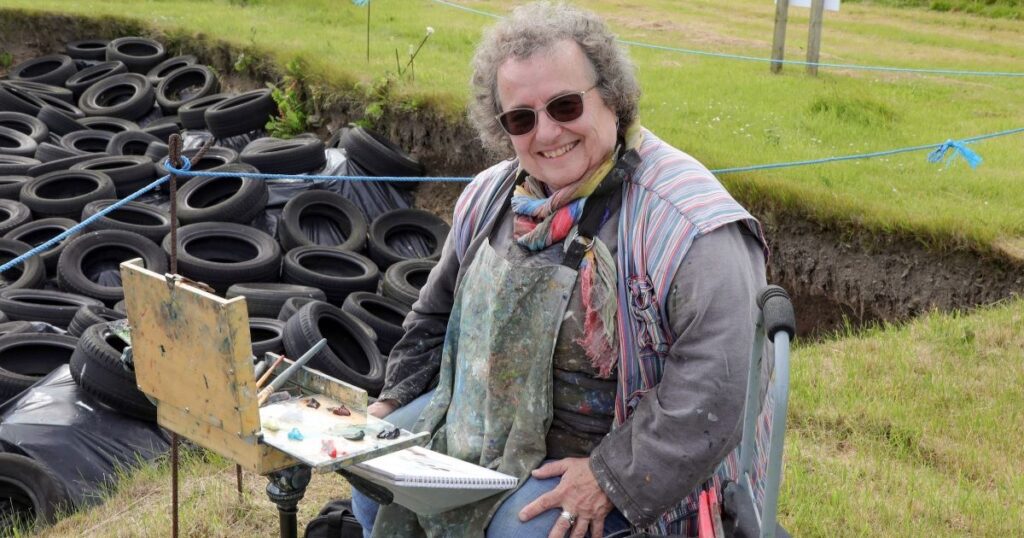
Ness of Brodgar, an artist’s legacy: Jeanne Bouza Rose creates stunning visual record of Orkney’s neolithic site
Twenty years ago one of Europe’s greatest prehistoric sites was uncovered in Orkney.
Since then, every summer, archaeologists have dug at the Ness of Brodgar, revealing 5,000-year-old wonders, including incredible remains of ceramics and elegant pottery.
But next month the neolithic site will be covered for the final time.
Experts and volunteers will down their trowels for the last time and soil will be tipped over the ancient buildings in a bid to preserve it for future generations.
For one woman, it’s the end of an era in which she has captured, not just the incredible finds, but the people and the meticulous nature of their archaeological work.
Since 2018 Jeanne Bouza Rose has been the artist in residence at the Ness of Brodgar.
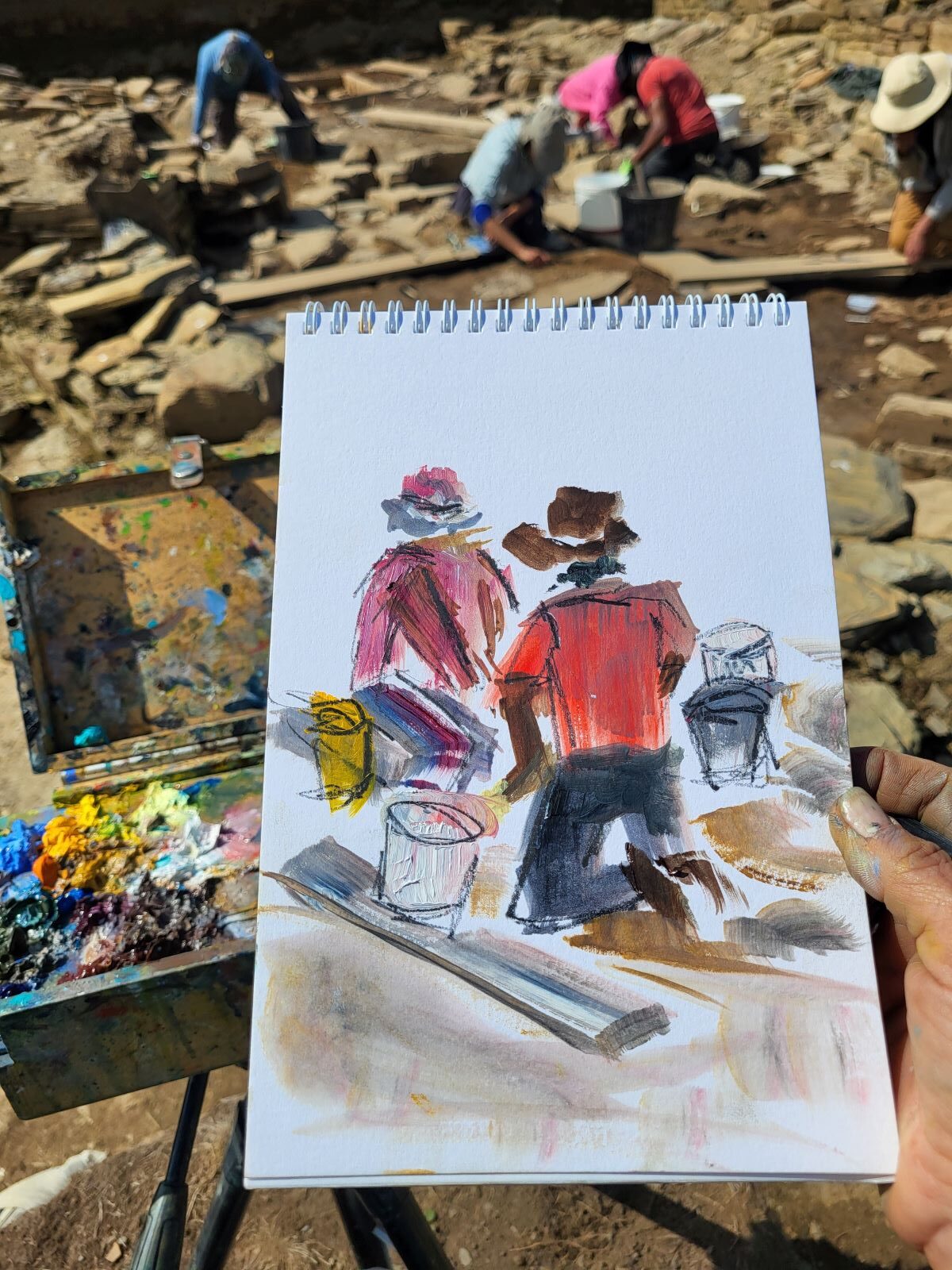
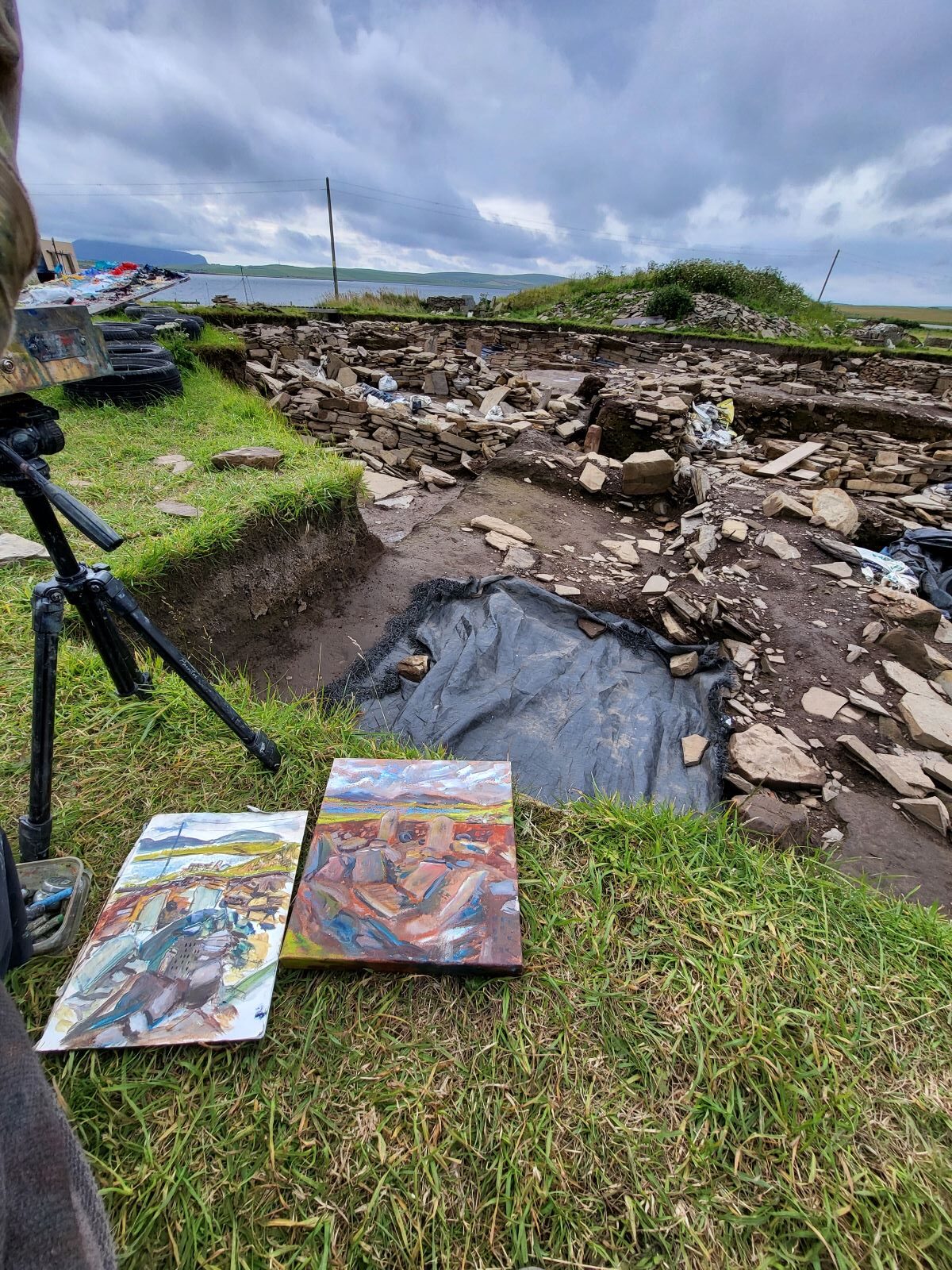
Along the way, she has given colour to the detailed records and findings of the dig, ensuring art becomes part of this world leading legacy.
Once covered by earth, the ability to physically look into the past at Ness of Brodgar will be lost until some future generation opens it again.
And while we have scientific logs of what has been uncovered at the site since 2003, Jeanne has created a different kind of visual record.
Her paintings have captured the ever-changing light dancing on the land, water and sky, giving a sense of the buildings and the work of the people.
‘As an artist, I try to capture not just these big moments but also the smaller one’s,’ Jeanne says.
‘The ones that show the focus, the meticulous nature of the archaeological work. I am drawn to colours and shapes within the whole environmental space.
‘Too often the artefacts are left to academics, perfectly catalogued and analysed.
‘However as an artist my objectives are different. For me it is about capturing the moments and conveying a more nuanced story.
‘I focus mostly on the past stone and earth remains, letting the look of a wall or the shadows on a group of stones draw my interest.
‘I generally ignore the human component moving around the site instead trying to read the energy of the lives that made the place, the walls, the hearths.’
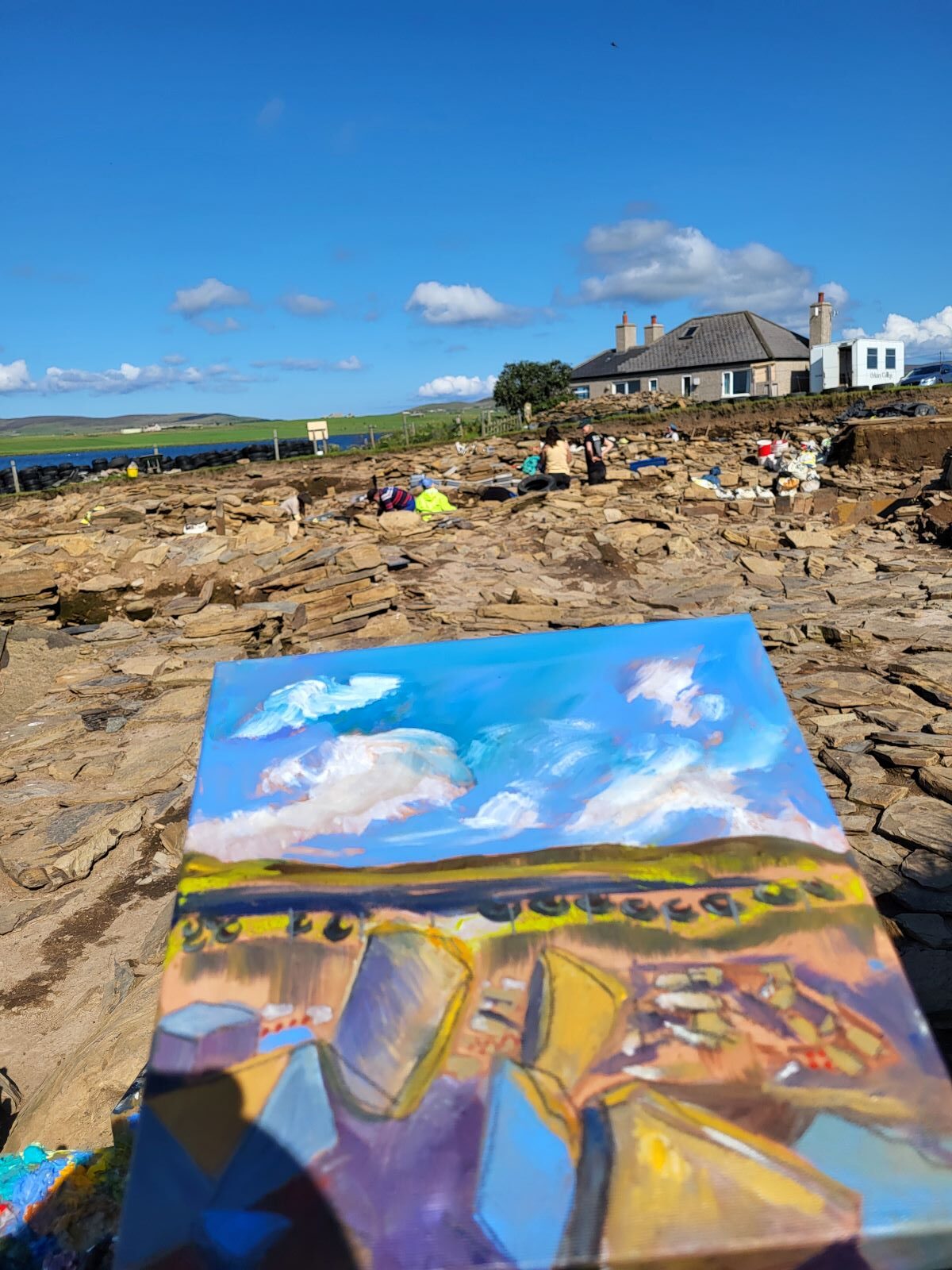
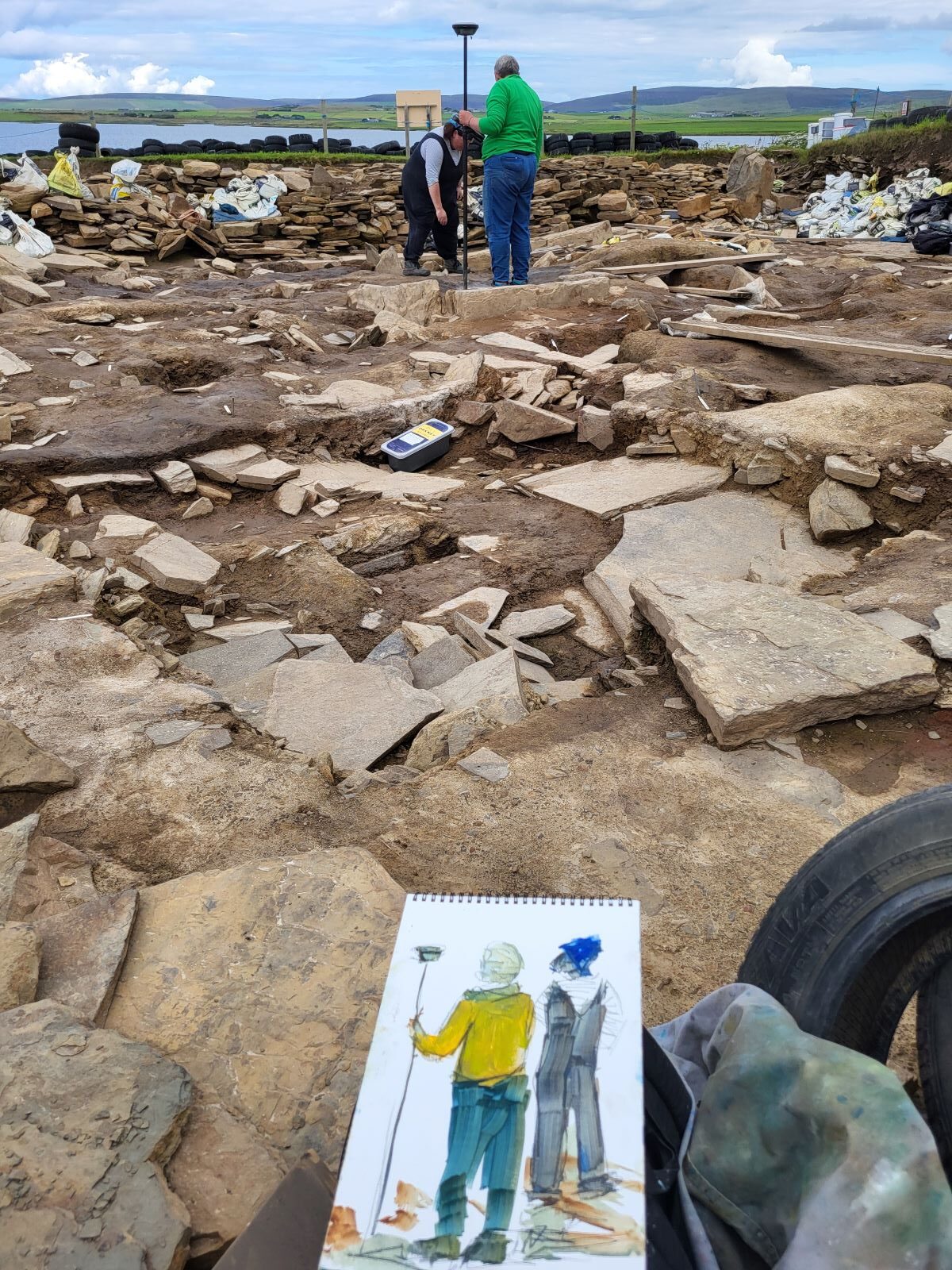
Jeanne has been a volunteer at the dig since 2011 and latterly from 2018 one of the artists in residence.
Born in the USA, she grew up on Long Island. As a child, she began painting and quickly developed a love of art
A yearlong teaching exchange brought her to Paisley in the 80s. After a successful teaching career back in New York, she started art holiday workshops in Orkney.
Through these visits to Orkney, she established herself as a successful artist, and eventually she opened a studio in Stromness, Orkney.
Her first oil painting at the Ness was large enough to cover a 15ft wall and is now the backdrop in the Orkney Museum for the key artefacts.
‘I created a montage of the site from north and south with features from Structure One and Twelve and the huge bulk of earth left for soil samples displaying a rainbow of earthy colours and recesses dark with shadows from the skilled hands of micromorphologists,’ Jeanne says.
‘On the canvas surface, I incised the more distinct marks found on Ness stones, using a stone from the Ness spoil heap.
‘I added earth from the site into the paint and I invited archaeologists to leave their favourite archaeological word or phrase along the bottom to form the roots of it all.

‘I realised that I was often the sole watcher on the sidelines able to capture the final work in the trenches.
‘The weather was flexible and the work was speedy so I tried to capture the gestures of people, plastic and tyres, light and colour of the diggers’ clothes and their postures against the sky in the ending days.
‘What this final season holds for my work is still a bit unknown.’
Nick Card has directed excavations at the Ness since the site was revealed in 2003.
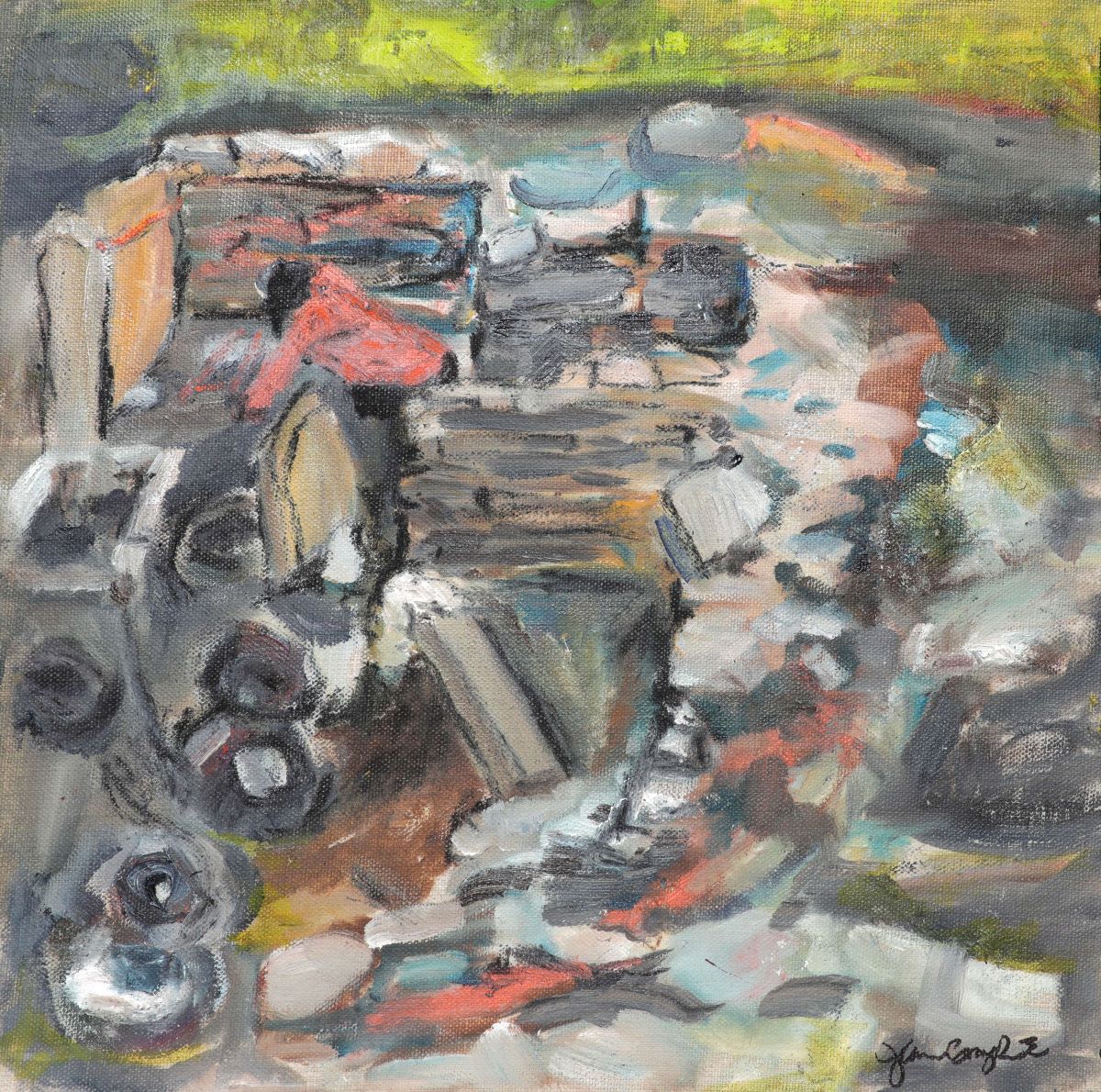
‘From the start of excavations at the Ness of Brodgar over 20 years ago we have wanted to record the site through as many means as possible to complement the traditional archaeological methods,’ he said.
‘The numerous artists in residence have captured using a multitude of media – sketching, painting, ceramics, sound, and film – many aspects of the excavations not normally preserved.
‘All of this will form a valuable part of the overall site archive and legacy.’
Read more Culture stories here.
Subscribe to read the latest issue of Scottish Field.
TAGS

